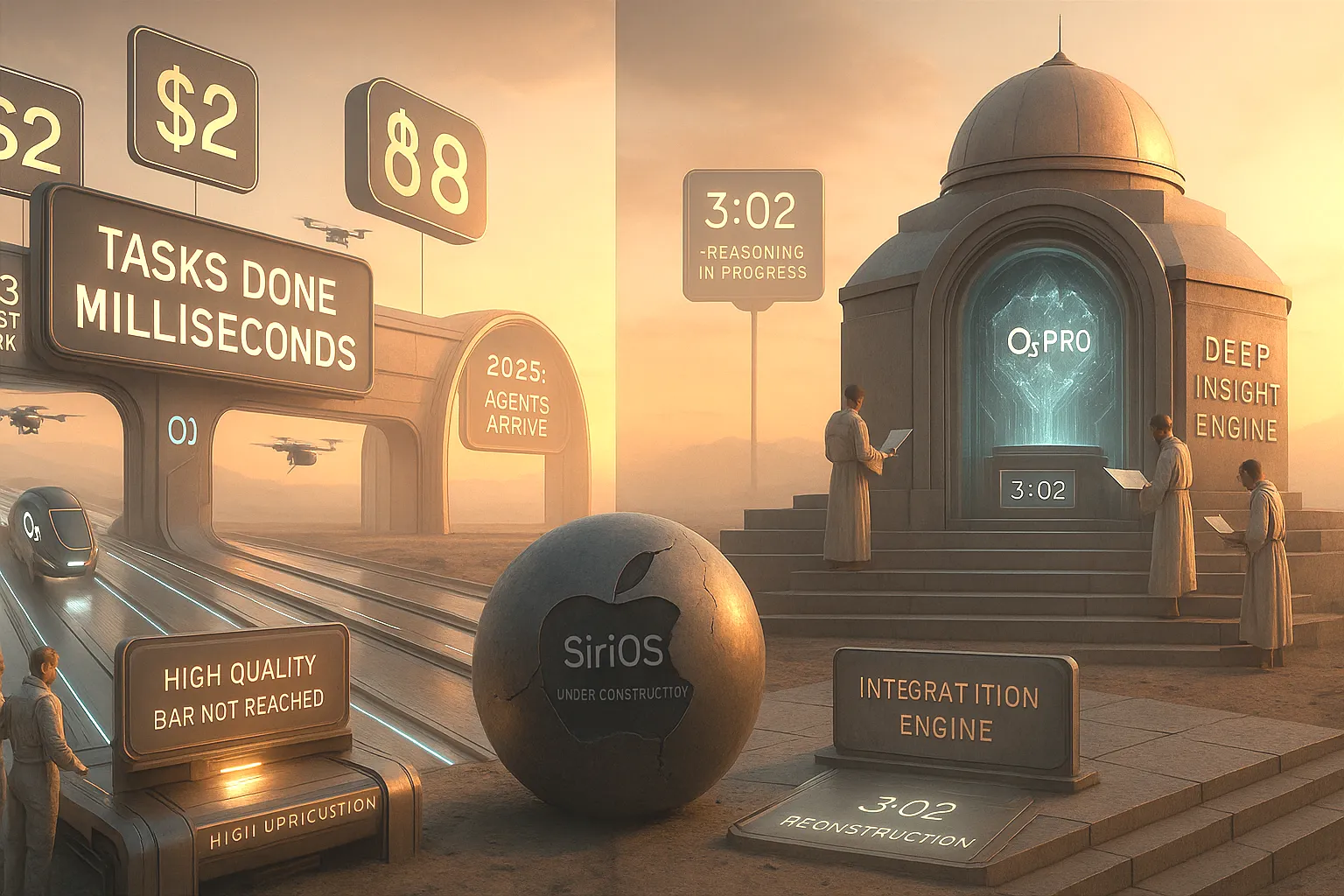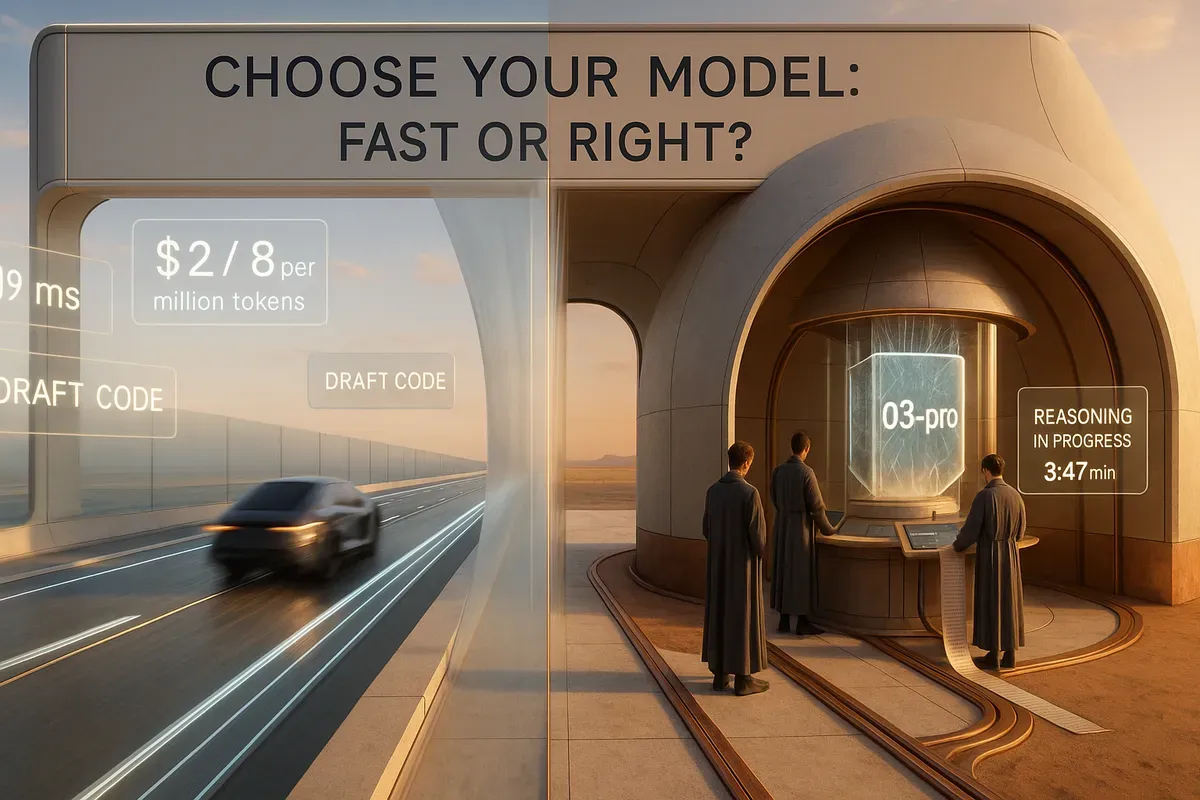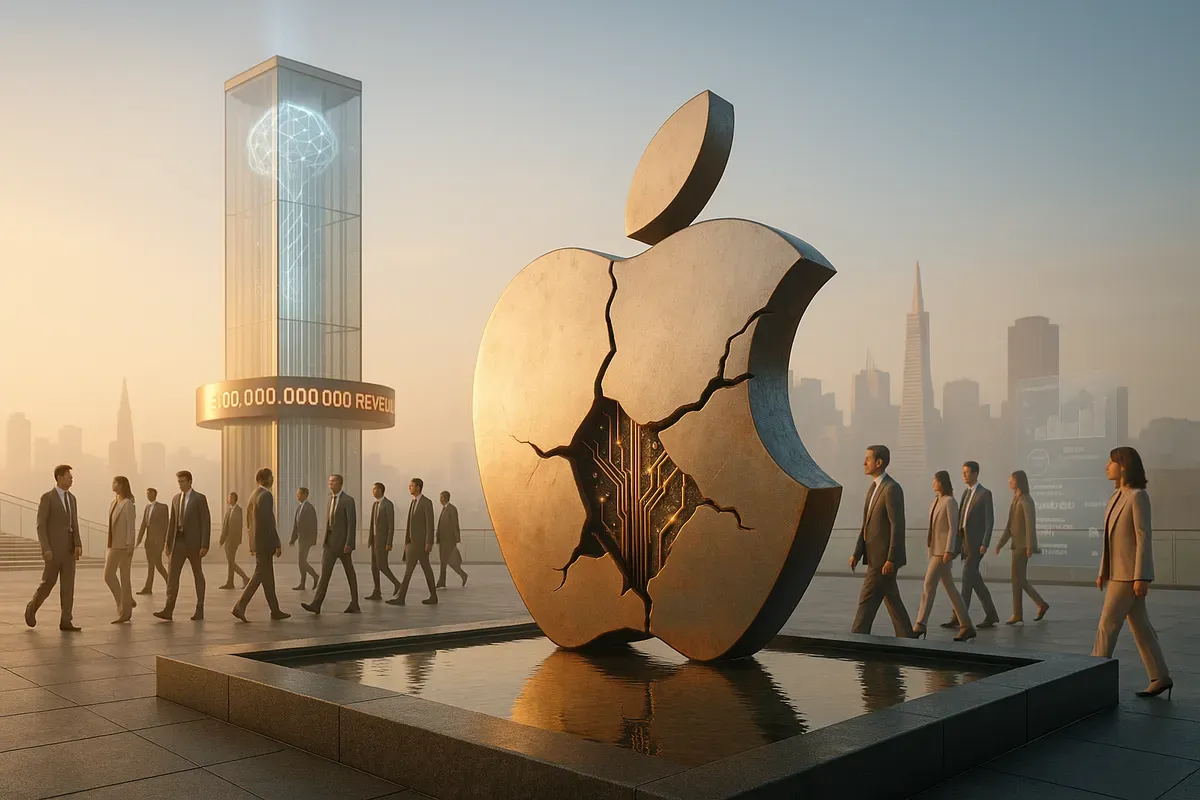Five Replace Fifty. Chips Stay Home.
Good Morning from San Francisco, Coca-Cola swapped fifty crew members for five AI specialists. Production time collapsed from a year

Good Morning from San Francisco, ☀️
OpenAI cut o3 model prices by 80%. Input tokens dropped from $10 to $2 per million. Output tokens fell from $40 to $8. 💸
This undercuts Google and Anthropic. What cost $50 now costs $10.
The trade-off is speed. O3-pro costs ten times more but thinks harder. Users wait three minutes for basic responses. ⏰
The market splits two ways. Fast models handle daily tasks. Slow models tackle complex work.
Apple did something rare this week. It admitted failure. 🍎
Craig Federighi said the smart Siri features promised a year ago still don't work. Apple needs more time to meet its "high quality bar."
Translation: We promised something we couldn't deliver. 😬
Rather than chase AI leaders, Apple is retreating to familiar ground. It's focusing on hardware-software integration instead of cloud services. 🔄
Stay curious,
Marcus Schuler ✨

OpenAI cut prices on its o3 reasoning model by 80%. Input tokens dropped from $10 to $2 per million. Output tokens fell from $40 to $8.
The move puts OpenAI against Google's Gemini 2.5 Pro and undercuts Anthropic's Claude models. A million tokens processes about 750,000 words. What cost $50 now costs $10.
CEO Sam Altman announced the cuts on X. He wrote he was "excited to see what people will do with it now."
The slow lane costs more
OpenAI also launched o3-pro at $20 per million input tokens and $80 for outputs. That's ten times more than the discounted o3.
The trade-off is speed. O3-pro takes over three minutes to respond to simple prompts. Users wait minutes for basic queries.
But expert evaluators prefer o3-pro over standard o3 64% of the time. The model works best with extensive context—complete project histories and detailed background information.
Market splits two ways
The AI market now divides into two camps. Fast models like GPT-4o handle daily tasks and conversation. Slow reasoning models tackle complex analysis and planning.
Fast models work for customer service and quick questions. Slow models suit research projects and strategic planning.
Independent testing found o3 costs $390 to complete a benchmark suite, compared to $971 for Gemini 2.5 Pro.
The bigger picture
Altman's blog post frames these changes as part of a larger shift. He claims we're past the "event horizon" of AI development.
His timeline: 2025 brings agents that do real cognitive work. 2026 delivers systems that figure out novel insights. 2027 may see robots handling real-world tasks.
The 80% price cut makes advanced reasoning accessible to smaller teams. What was once restricted to well-funded companies now fits startup budgets.
Why this matters:
Read on, my dear:

Prompt:
Photograph of a man in a dark gray business suit
sitting upright in a small, textured white boat shaped like a folded origami paper vessel, floating on calm blue ocean water. The artist's initials "PJ" is signed at the bottom in small letters. He holds a black leather briefcase in his lap and gazes into the distance with a calm, composed expression. The sky is bright and mostly clear, with soft white clouds scattered across the horizon. The crisp edges of the boat and its unique crystalline surface contrast sharply with the smooth ripples of the sea. Reflections shimmer on the water’s surface, enhancing the surreal presence of a formally dressed office worker adrift in a delicate, minimalist vessel. ,photo,surreal,conceptual art,hyper-realistic,business,portrait photography

Apple did something rare this week. It admitted failure.
Craig Federighi stood on stage at Apple's developer conference and said the smart Siri features promised a year ago still don't work. The company needs more time to meet its "high quality bar."
Translation: We promised something we couldn't deliver.
This marks an unusual public admission from Apple. The company built its reputation on showing finished products, not works in progress. Yet here was Federighi explaining why the Siri that could search your apps and remember conversations never shipped.
The problem runs deeper than missed deadlines. Apple tried to rebuild Siri twice. The first version worked in demos but failed real-world testing. The second version is still in development.
Apple's approach to AI clashes with how the technology works. The company designs products in secret, polishes them, then ships them complete. AI development follows the opposite path—release early, improve constantly through user feedback.
This mismatch hurt Apple badly. While competitors like OpenAI and Google shipped better AI tools, Apple struggled to deliver basic features it had already shown.
Rather than chase AI leaders, Apple is retreating to familiar ground. The company unveiled a new design language that unifies its operating systems. It's focusing on features that connect Apple devices. It's giving developers AI tools instead of building everything itself.
This retreat makes sense. Apple excels at hardware-software integration, not cloud services. The company's real advantage comes from owning the entire experience across multiple devices, not from having the smartest chatbot.
Why this matters:
Read on, my dear:

Sample Task: Enter your blog post about "email marketing tips" and MarketMuse will show you're missing topics like automation, segmentation, and analytics.
Google released Android 16 today, months ahead of its usual August-September launch window. The update brings live delivery tracking, grouped notifications, and desktop-style windows for phones connected to monitors.
Google offered buyouts Tuesday to employees across its search, ads, and engineering divisions as the company cuts costs to fund AI expansion. The voluntary exit program targets workers who "don't feel aligned" or struggle to meet expectations, while demanding office returns for remote staff within 50 miles of Google facilities.
X threatened to sue companies like Verizon and Ralph Lauren unless they resumed advertising, successfully pressuring at least six firms into new spending deals. The social media platform's legal intimidation campaign aims to rebuild ad revenue that collapsed after Musk's 2022 takeover drove away major advertisers.
Elon Musk posted Wednesday that his criticism of Trump "went too far" after the two traded online insults last week. The billionaire deleted his harshest posts while Trump threatened to cut federal contracts worth billions to Musk's companies.
Peter Thiel-backed cryptocurrency exchange Bullish filed confidentially for a US public offering, riding the wave of crypto enthusiasm under Trump's pro-digital asset policies. The move follows Circle's record-breaking $1.1 billion IPO last week, which soared 168% on its first day and sparked a rush of crypto companies toward public markets.
Nvidia CEO Jensen Huang said Europe's AI computing capacity will grow tenfold in two years, with over 20 massive data centers planned across the continent. The chip maker announced partnerships with Mistral AI and others to build what Huang calls "AI factories," ending Europe's current shortage of graphics processing units needed for artificial intelligence development.
Ukraine deployed AI-powered drones that flew hundreds of miles to hit Russian air bases beyond the Arctic Circle, continuing flight paths even after losing radio contact. The autonomous targeting systems represent a new phase in drone warfare, with both sides racing to develop swarm capabilities and "last-mile" AI guidance that works despite electronic jamming.
Meta and TikTok told Europe's second-highest court that EU supervisory fees are unfair and based on flawed math. The companies pay 0.05% of global income under the Digital Services Act but claim regulators double-count users and miscalculate group profits.
Adyen co-founder Arnout Schuijff raised €30 million from Google's CapitalG for Tebi, his restaurant management platform that handles payments and reservations. The Dutch startup processes hundreds of millions in payments annually and plans to expand from the Netherlands to the UK, then across Europe.
Two GitHub veterans think AI will replace programmers before it replaces anyone else. They've raised $626 million to prove it.
The Founders Jason Warner (ex-GitHub CTO) and Eiso Kant (serial entrepreneur) founded Poolside in 2023 with 🎯 one mission: build AI that codes better than humans. The Paris-based company employs hundreds across Europe and the US. Warner spent years watching developers struggle with repetitive tasks. Kant built developer analytics tools. Together, they decided software engineering would be AI's first conquest.
The Product Poolside builds foundation models that actually understand code, not just copy-paste it. Their "Malibu" model learns by writing millions of programs and testing whether they work—like a programmer practicing 24/7. The AI assistant handles everything from autocomplete to full module generation. Enterprise customers get on-premises deployment, custom training on their codebase, and zero data leakage. Think GitHub Copilot, but trained from scratch and locked down for Fortune 500 paranoia.
The Competition GitHub Copilot owns the market with 1.8M users and Microsoft's backing. Startups like Magic ($320M raised), Codeium ($150M), and Cognition ($175M) chase similar dreams. Amazon, Google, and IBM push their own coding assistants. Poolside's edge: enterprise-first design and proprietary training methods that don't rely on OpenAI's scraps.
Financing Bain Capital led a $500M Series B in October 2024, with Nvidia, eBay, and others joining the party. Total funding: $626M. Valuation: $3B before shipping a commercial product. French billionaire Xavier Niel and public bank Bpifrance backed the seed round. The money funds 10,000 Nvidia GPUs and a sales army led by GitHub's former revenue chief.
The Future ⭐⭐⭐⭐ Poolside has the talent, capital, and technology to win enterprise deals. The coding AI market could hit $27B by 2032, and every Fortune 500 company needs this. Risk: they're burning cash on massive infrastructure before proving product-market fit. If enterprises don't pay up fast, even $626M won't last forever in the GPU-hungry AI game.
Get the 5-minute Silicon Valley AI briefing, every weekday morning — free.